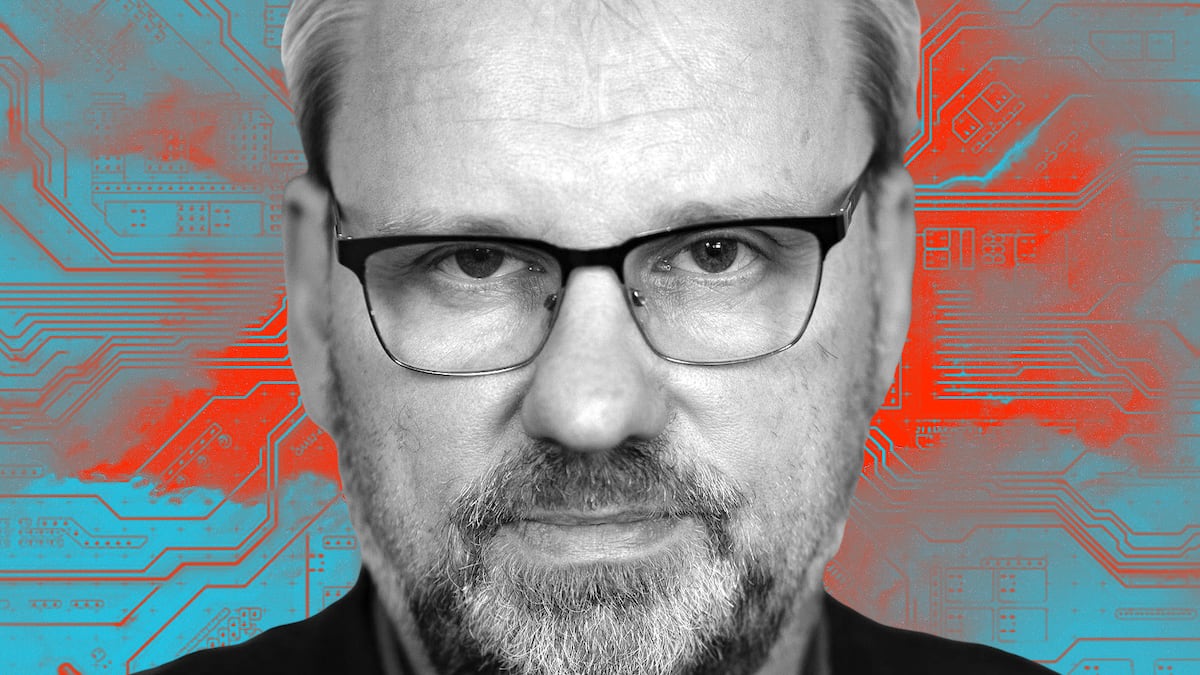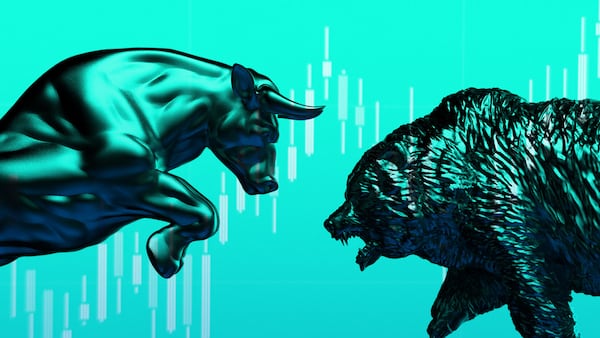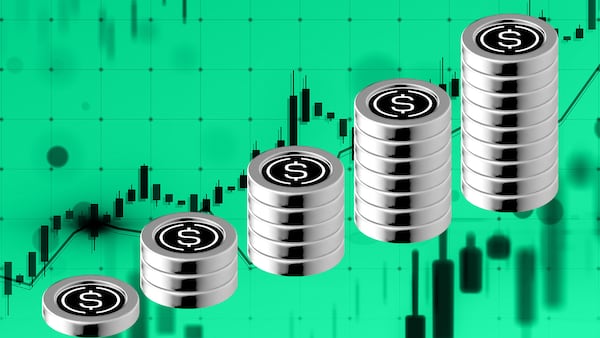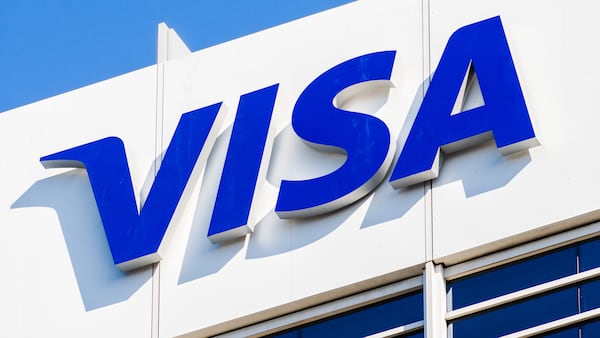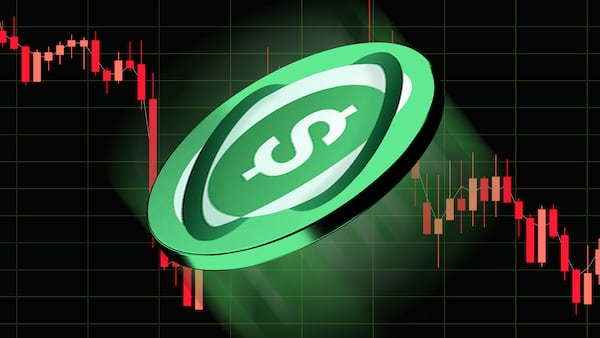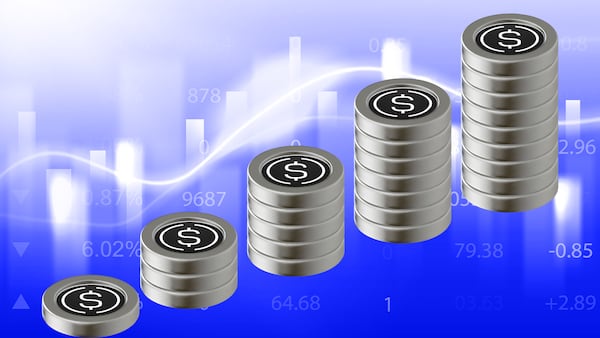- The next financial crisis will be a domino effect, just like 2008.
- Cryptocurrencies add a new flavour to any upcoming crash.
- Memecoins are not yet systemic, but stablecoins are.
Wolfgang Münchau is a columnist for DL News. He is co-founder and director of Eurointelligence, and writes a column on European affairs for the New Statesman. Opinions are his own.
I was one of the few financial commentators who predicted the Global Financial Crisis — back in February 2008 when I published a book on that subject.
It was the only time I ever called a market crash before.
I’m doing it again now – and crypto could be a part of this bubble, and possibly a rod around which it can ignite.
There is no reliable way to predict bubbles, but it is usually a situation where stuff comes together: the emergence of unusual financial instruments surrounded by this-time-is-different-style narratives; macroeconomic shocks that mainstream economists and investors tend to underestimate; and, of course, classic equity market exuberance.
It is usually one of those characteristics of a particular bubble. But this time, it could be more interconnected.
Crypto as an asset
Crypto was always a difficult asset to categorise for traditional investors because there is no agreed way to calculate underlying value.
Beyond the classic crypto assets, like Bitcoin, there is a lot of crazy stuff going on that defies even the most benevolent attempts to find a good reason.
People don’t even try to endow memecoins with any higher purpose. The CoinGecko website says: “One of Dogecoin’s strengths is its relaxed and fun-loving community.“
Those who used to peddle CDOs during the global financial crisis at least pretended that their fraudulent Ponzi schemes had some rational foundation.
The total value of all memecoins right now is approximately $80 billion. Dogecoin accounts for around half of that.
Donald Trump’s coin is $3.8 billion. The problem with all of them is that they are not even intended to make money for the investor. It is a world dominated by scammers and influencers. If you have enough followers, people buy the coins you are buying – because it’s cool.
This is deep red-alert bubble territory for me - very much like what happened during the dotcom bubble.
The memecoin universe is too small to bring down the global financial system, but it has just shown that it can make a dent.
Argentina’s benchmark stock index tumbled more than 5% after a judge was appointed to probe President Javier Milei’s role in promoting a memecoin that crashed.
Another crypto asset class might have an even bigger effect.
The total market cap of stablecoins stands at $225 billion. Stablecoins have a rational business model behind them, but they are vulnerable to macroeconomic shocks.
Fiat-backed stablecoins hold reserves in short-term government bonds, such as US Treasuries.
If inflation rises, as I expect to happen, and the Fed will once again raise interest rates, the price of short-dated bonds will plummet and this will reduce the value of reserves.
The 1994 bond market crisis was triggered by an unexpected quarter point interest rate increase by the Federal Reserve.
Three years later, the Asian financial crisis occurred because countries operated exchange-rate regimes very similar to stablecoins. They were all backed by US Treasuries.
This is the thing about finance. Nothing is really new. It’s all repackaged.
Stablecoins are relatively new instruments, but a stablecoin crisis would be a classic case of an asset-liability mismatch, a very common type of financial crisis since time immemorial.
Apart from Asia in 1997, this is also what happened in the UK during the short, nasty reign of then-Prime Minister Liz Truss in 2022, who spooked the markets with an expansionary budget that led to a sudden rise in bond yields.
That prompted a crisis in a specialised end of the derivative markets and almost killed the pension industry. While ultimately not very serious, this was a good example of contagion into other market segments.
Stock market
My third red flag is the stock market. Robert Shiller’s cyclically adjusted price-earning ratio, or CAPE, is edging towards the all-time high for the S&P 500 Index.
The rate is at just under 40 now, not far off from the peak during the dot-com bubble. This is, by historical comparison, an absurdly high number. The CAPE was only at 25 in 1929, and lower in 1987 and 2008. We are close to the peak of dot-com bubble-madness territory.
Back in the late-1990s, investors were rational to be excited about the commercial opportunities offered by the internet, but at that point, the main trends were not yet clear to see.
Microsoft and Intel ruled the sector. Apple was an ailing computer manufacturer. Amazon just got started. Google and Facebook were not yet on the horizon.
The investors were ultimately right in their analysis that the dot-com era would produce massive profits. But they were mostly wrong about the stocks.
One of their favourites back then was AltaVista, the first search engine.
So I am wondering: is Nvidia the AltaVista of today? AI is going to be huge, but do we really know who will benefit the most?
The technology behind AI is open-source. The data on which the models are trained are private, but not exclusive. If my electric car collects data by driving around, so can yours.
As a Google memo once candidly admitted: “We have no moat, and neither does OpenAI.”
The recent DeepSeek shock to the tech sector should serve as a reminder of how fickle some of the optimistic projections for the industry are.
The China-developed chatbot performs on par with ChatGPT, comes for free, and was developed at a fraction of the costs.
Artificial intelligence
My own hunch is that the big winners of AI will be the users of AI, not the producers. They stand to achieve big productivity gains.
I struggle to see supplier monopolies, like Nvidia’s dominance for GPUs, or ASML’s dominance of lithography machines, persisting in the indefinite future.
But this is what current market valuation is premised on. If I am right, this would be the dot-com bubble all over. Shiller’s CAPE tells me that this hunch is supported by the data.
Once the tech bubble bursts, new companies will arise from its ashes, and a new tech bubble might form.
The three bubbles I am describing are separate, and not obviously inter-related, but they could easily merge into a super-bubble. What has been missing until now is the trigger. And this is the weakness of the crisis prophesy business. We know that, by definition, the unsustainable ends. But we do not know when.
My hunch is that the trigger will be something to do with Trump - a trade war, an excessive tax cut, or some deregulation gone wrong.
It could be from the crypto sector itself, which will be earmarked for deregulation.
Hester Peirce, the SEC Commissioner, said that the quid pro quo for light regulation was that people should not expect “Mama government to tell them what to do or not to do, nor to bail them out when they do something that turns out badly.”
One crisis propagation mechanism could be a rise in inflation, a bond market crash, followed by a stablecoin meltdown – an Asian financial crisis for the crypto industry.
That might also be a good moment for tech investors to panic.
This is where I see the bigger danger lies, not in any one isolated crisis, but in a financial domino effect that ripples through the entire system. Like it did in 2008.
